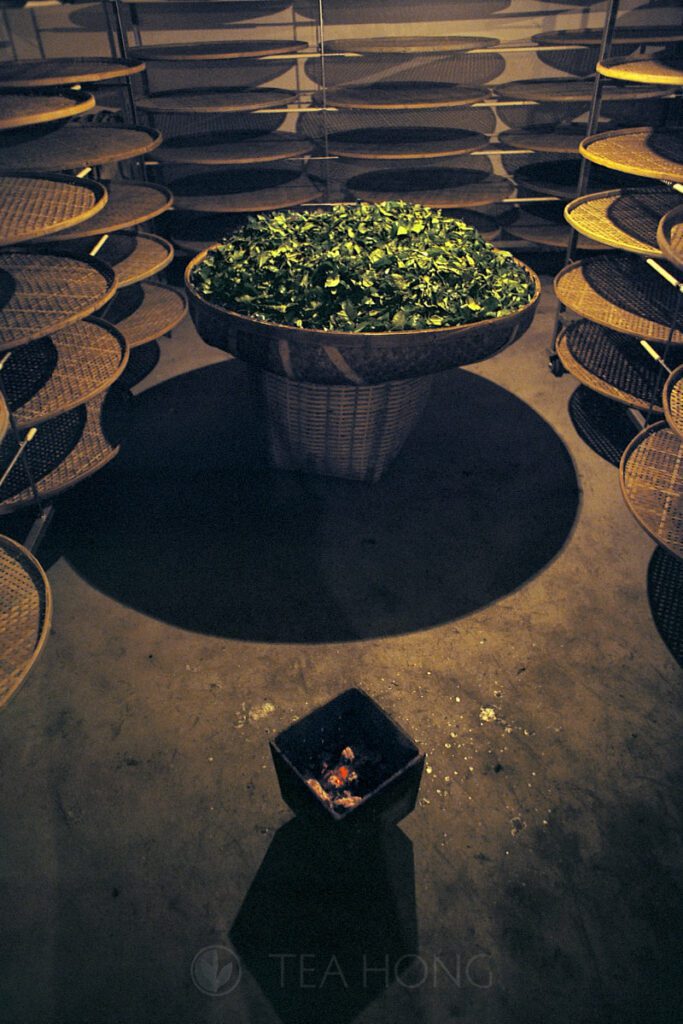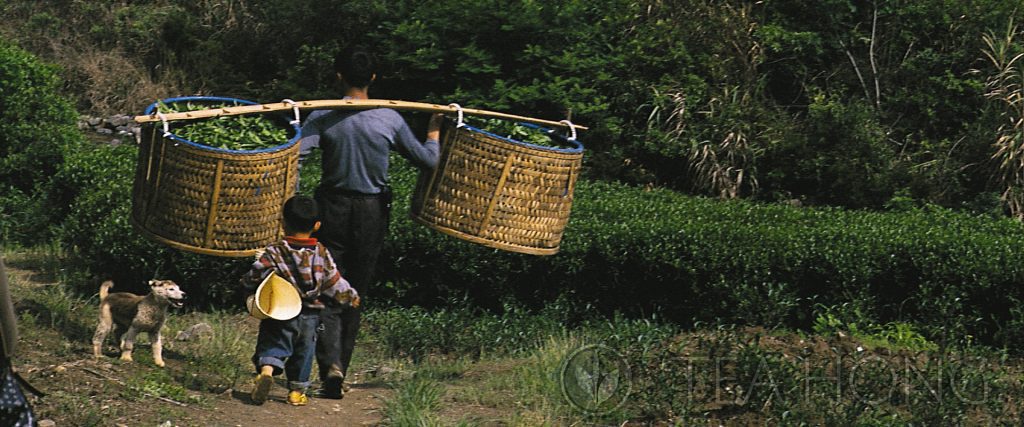

A small patch of tea bushes on the peak of a Wuyi mountain, Zhong Xin Yan, i.e. Centre Rock
Amongst old tea drinkers, Wuyi oolongs are referred to as “Yan Cha” — Tea from the Rocks, or Rock Tea, as some in the trade call it. The mountains in the Wuyi-shan area are made up largely of big dark colour rocks, a different landscape from some of the neighbouring counties. Yet since tea export became a major part of the local economy in the 18th century, Wuyi style tea production has been spread very broadly. To differentiate the authenticity of tea from Wuyi, where the heritage, techniques, and terroir are believed to be superior than the neighbouring areas, oolongs from Wuyi have been referred to as “Teas from the Authentic Rocks” — Zheng Yan Cha. Hence the shorter form, Yan Cha, is broadly used.


I could not find my own old photo of the match box folk remedy I took years ago. It was not digital then. But found this on the internet. It is a newer package than the one I remember. I believe the company still operates and produces a similar product, perhaps in a different package. Notice the very low grade tealeaves that look so much like what one can get as “Wuyi tea” in certain stores.
My Childhood Medicine
In the 1960’s, seeing a doctor was very costly to most families, especially to us. Like a majority of Hong Kongers of my age, we were the first generation born locally of refugee parents escaping from Communist China during the 1950’s. Most were very deprived. When one got sick, people often sought help from more affordable folk remedies.
We were exceptionally poor, even by refugee family standard, and because of the poor living environment and lack of food, I got sick quite often as a child, especially during the change of season like now. My mother would get a small package, the size of a larger matchbox, from a neighbourhood herbal medicine shop. She would then put the very dark colour content in a cup, steep it with boiling hot water, and force me to drink up that “medicine”. Magically, it worked most of the time. My mother called it “Hopp Zai Cha” — Little Box Tea.
Many years later, I saw in some closedown sale in an old shop that matchbox package and picked up one for nostalgic purpose. To my surprise, the major ingredient was actually tealeaves. It smelled and tasted like Wuyi, albeit a very cheap one, with some additional herbal smell from the other ingredients.
This discovery was an initial spark for me to study the medicinal use of tea later in life when my career changed dramatically from design consultancy to tea.
Wuyi Yan Cha


Charcoal warmer in the oxidation room during the last round of oxidation in Wuyi oolong production. This usually happens around 3 ~ 4 am for high quality productions
This family of oolongs is marked with a distinctive style: higher temperature roasting and baking, both in those varieties with medium bake and those with deep bake. This firing not only gives the tea a characteristic taste profile, but also tones down the “chilly’’ nature of the raw tealeaves to give the tea their relatively warmer TCM inclination.
Significant maturing
At Tea Hong, we do not sell freshly produced Wuyi oolongs. I believe that the tea has to be properly rested for mellowing before it is suitable for enjoyment, both for the taste and for the body. More so for deep baked versions.
Contrary to myths, traditional and master-crafted Wuyi oolongs are never over-fired. Cheap ones are. Over-firing is a technique to cover up poor harvests and lowly processing skills. While high-fire is a style, over-fire is a shortcoming. Even our deepest baked and most price-friendly selection, Cassia Classic, is not as over-fired like what’s popularly available in the market. It has been maturing in our storage since 2019 (the batch available at the time of this writing).
May I invite you to join my continual study of this group of teas by first exploring their sensory characteristics:
Medium baked
- Lily Eccentric 2017
- Iron Buddha Supreme 2018
- Meizhan Classic 2015
- Sacred Lily 2018
- Cassia Extraordinaire 2021
Deep baked
- Cream Stout 2016
- Narcissus Classic 2016
- Red Cloak Grande 2018
- Cassia Classic 2019
(The vintages indicated above reflect the batches that are available at the time of this writing. Please check the vintage of the tea you’d like to purchase on the specific product page under the tab “Additional Information”, if you are reading this months later or more.)
See all Wuyi teas here» Wuyi


Wuyi tea farmer and boy going home in late afternoon with the sun-wilted harvest of the day. A long night of processing awaits.
Comments (2)
-
Fascinating, Leo. I wonder if in the future, you will talk more about the importance of properly “resting” a tea before it goes to market.
-
Thanks for asking. Most certainly I will. However the need for each different tea category, or even specific tea selection can be different. If there is any one category or selection you are interested in, please let me know.
-
Leave a reply
You must be logged in to post a comment.







